Gastrointestinal Complications After Bariatric Surgery
- PMID: 27118949
- PMCID: PMC4843041
Gastrointestinal Complications After Bariatric Surgery
Abstract
Bariatric surgery is increasingly being performed in the medically complicated obese population as convincing data continue to mount, documenting the success of surgery not only in achieving meaningful weight loss but also in correcting obesity-related illnesses. Several surgical procedures with varying degrees of success and complications are currently being performed. This article discusses the short- and long-term gastrointestinal complications for the 4 most common bariatric surgical procedures: laparoscopic adjustable gastric banding, vertical sleeve gastrectomy, Roux-en-Y gastric bypass, and biliopancreatic diversion with duodenal switch.
Keywords: Bariatric surgery; biliopancreatic diversion; duodenal switch; gastric bypass; gastrointestinal complications; vertical sleeve gastrectomy.
Figures
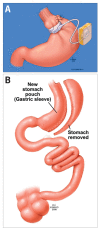
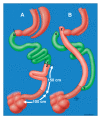
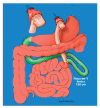
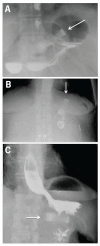

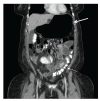


Similar articles
-
Conversion of failed gastric banding into four different bariatric procedures.Surg Obes Relat Dis. 2012 Jul-Aug;8(4):400-7. doi: 10.1016/j.soard.2011.06.009. Epub 2011 Jun 30. Surg Obes Relat Dis. 2012. PMID: 21937286
-
Heterogeneity of weight loss after gastric bypass, sleeve gastrectomy, and adjustable gastric banding.Surgery. 2019 Mar;165(3):565-570. doi: 10.1016/j.surg.2018.08.023. Epub 2018 Oct 11. Surgery. 2019. PMID: 30316577
-
Surgery for obesity.Curr Opin Gastroenterol. 2005 Nov;21(6):679-83. doi: 10.1097/01.mog.0000182859.04046.0e. Curr Opin Gastroenterol. 2005. PMID: 16220044 Review.
-
Medium to long-term outcomes of bariatric surgery in older adults with super obesity.Surg Obes Relat Dis. 2018 Apr;14(4):470-476. doi: 10.1016/j.soard.2017.11.008. Epub 2017 Nov 10. Surg Obes Relat Dis. 2018. PMID: 29249586
-
[History, Recent Advancements, and Prospects in Bariatric/Metabolic Surgery].Zhongguo Yi Xue Ke Xue Yuan Xue Bao. 2018 Oct 30;40(5):581-590. doi: 10.3881/j.issn.1000-503X.10804. Zhongguo Yi Xue Ke Xue Yuan Xue Bao. 2018. PMID: 30404687 Review. Chinese.
Cited by
-
Bariatric Surgery and Gut-Brain-Axis Driven Alterations in Cognition and Inflammation.J Inflamm Res. 2023 Nov 22;16:5495-5514. doi: 10.2147/JIR.S437156. eCollection 2023. J Inflamm Res. 2023. PMID: 38026245 Free PMC article. Review.
-
Gut microbiota and obesity: New insights.Front Nutr. 2022 Oct 14;9:1018212. doi: 10.3389/fnut.2022.1018212. eCollection 2022. Front Nutr. 2022. PMID: 36313072 Free PMC article. Review.
-
Jejuno-gastric intussusception: A case report of unusual cause of food intolerance after roux-En-Y gastric bypass.Int J Surg Case Rep. 2018;45:126-129. doi: 10.1016/j.ijscr.2018.03.029. Epub 2018 Mar 26. Int J Surg Case Rep. 2018. PMID: 29605777 Free PMC article.
-
Hospital Variation in Preference for a Specific Bariatric Procedure and the Association with Weight Loss Performance: a Nationwide Analysis.Obes Surg. 2022 Nov;32(11):3589-3599. doi: 10.1007/s11695-022-06212-8. Epub 2022 Sep 14. Obes Surg. 2022. PMID: 36100807 Free PMC article.
-
A Hub and Spoke Learning Program in Bariatric Surgery in a Small Region of Italy.Front Surg. 2022 Mar 24;9:855527. doi: 10.3389/fsurg.2022.855527. eCollection 2022. Front Surg. 2022. PMID: 35402486 Free PMC article.
References
-
- Gastrointestinal surgery for severe obesity: National Institutes of Health Consensus Development Conference Statement. Am J Clin Nutr. 1992;55(2 suppl):615S–619S. - PubMed
-
- Flegal KM. Epidemiologic aspects of overweight and obesity in the United States. Physiol Behav. 2005;86(5):599–602. - PubMed
-
- Flegal KM, Carroll MD, Kit BK, Ogden CL. Prevalence of obesity and trends in the distribution of body mass index among US adults, 1999-2010. JAMA. 2012;307(5):491–497. - PubMed
LinkOut - more resources
Full Text Sources
Research Materials
